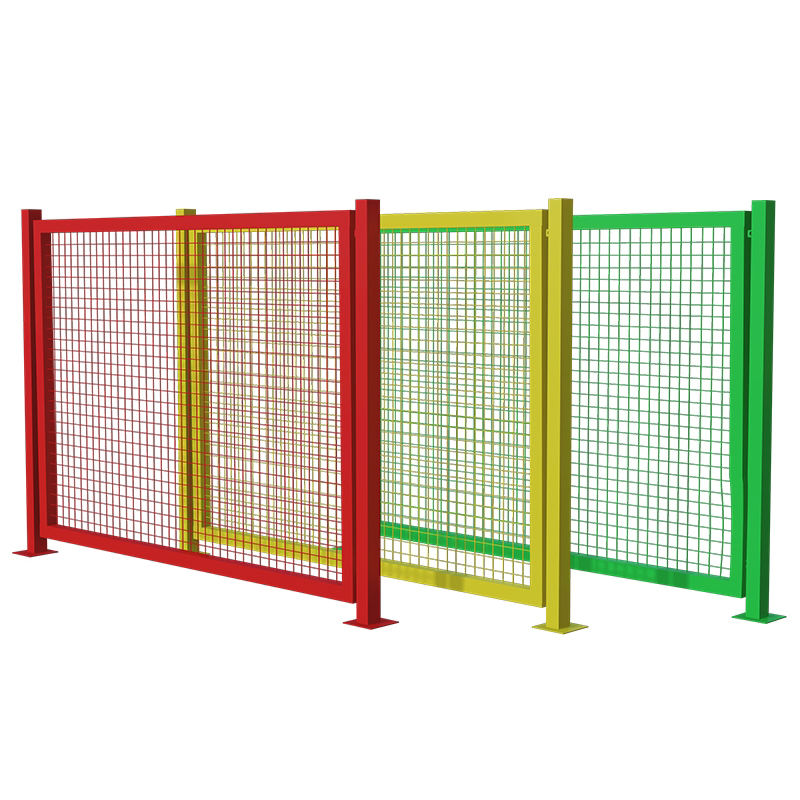The Versatility of Expanded Mesh Screens
Expanded mesh screens, a unique product widely used in various industries, are derived from a sheet of metal or other materials that are cut and then expanded to create a mesh structure. This cellular configuration not only enhances the product's strength but also reduces weight, making it an ideal choice for applications that require permeability and durability. In this article, we will explore the benefits, applications, and manufacturing processes of expanded mesh screens.
What is Expanded Mesh Screen?
An expanded mesh screen is produced by taking a flat sheet—commonly made from materials like aluminum, stainless steel, or mild steel—and cutting it with a die. The sheet is then expanded to form a pattern of interconnected strands, resulting in a net-like structure with a series of openings. This innovation allows for exceptional airflow, visibility, and drainage while maintaining robust mechanical properties.
Benefits of Expanded Mesh Screens
One of the primary advantages of using expanded mesh screens is their exceptional strength-to-weight ratio. The design enhances structural integrity while minimizing excess material, making them lightweight and easy to handle. This feature is particularly advantageous in construction and architectural applications where reducing weight can lead to lower transportation and installation costs.
Moreover, expanded mesh screens are highly versatile
. They can be produced in various materials, thicknesses, and opening sizes, allowing for tailored solutions to meet specific needs. The ability to customize them visually and functionally makes them suitable for a broad spectrum of applications—from industrial to decorative uses.Another significant benefit is durability. Expanded mesh screens exhibit excellent resistance to corrosion, rust, and other environmental factors, particularly when made from stainless steel or coated with protective finishes. This durability translates to a longer lifespan, reducing the need for frequent replacements and lowering overall lifecycle costs.
Applications of Expanded Mesh Screens
expanded mesh screen

The applications of expanded mesh screens are extensive and varied. In the architectural realm, they are often used for facades, ceilings, and railing systems. Designers utilize them to create aesthetically pleasing structures that allow natural light and airflow while providing safety and security.
In the industrial sector, expanded mesh is used in filtration and separation processes. Its geometry allows for efficient liquid or gas filtration, making it an essential component in various manufacturing processes. Additionally, it serves as a protective screen for machinery and equipment, reducing the risk of foreign particles entering critical components.
Expanded mesh screens also find application in the automotive industry, where they are used in grilles, shields, and interior designs. The lightweight nature of these screens makes them suitable for improving vehicle efficiency without compromising safety.
Moreover, in outdoor and landscaping projects, expanded mesh can be used for fencing, trellises, and garden decorations. It offers a blend of functional and visual benefits, providing a modern touch to outdoor spaces while ensuring that plants have adequate support for growth.
Manufacturing Process
The manufacturing process for expanded mesh screens typically starts with selecting the appropriate sheet material based on the desired properties and applications. The selected sheets are then fed into a machine that precisely cuts and expands them according to the specified design. This process ensures consistency in quality and performance.
Post-production, the expanded mesh screens may undergo various treatments depending on their intended use. For instance, they may be coated to enhance corrosion resistance or undergo cutting and bending processes to achieve specific shapes and sizes suited for particular applications.
Conclusion
In summary, expanded mesh screens represent a remarkable blend of utility and design versatility. Their lightweight structure, combined with strength, durability, and range of applications, makes them indispensable in many sectors. Whether used in architecture, industrial applications, or even everyday products, expanded mesh screens continue to showcase their vast potential and adaptability. As industries evolve and the demand for innovative materials grows, expanded mesh screens will undoubtedly play a pivotal role in shaping future designs and solutions.
-
The Best Metal Mesh Solutions: Expanded Aluminum Metal vs. Expanded Stainless Steel Metal
NewsSep.10,2024
-
Round Perforated Sheets vs. Hexagonal Perforated Sheets vs. Embossed Perforated Sheet Metal
NewsSep.10,2024
-
Perforated Metal Sheets
NewsSep.10,2024
-
Experience The Excellence Of Stainless Steel Grating
NewsSep.10,2024
-
Discover the Versatility Of Metal Mesh Expanded Forming Machines
NewsSep.10,2024
-
Discover The Advantages Of Steel Grating For Sale
NewsSep.10,2024
Subscribe now!
Stay up to date with the latest on Fry Steeland industry news.

